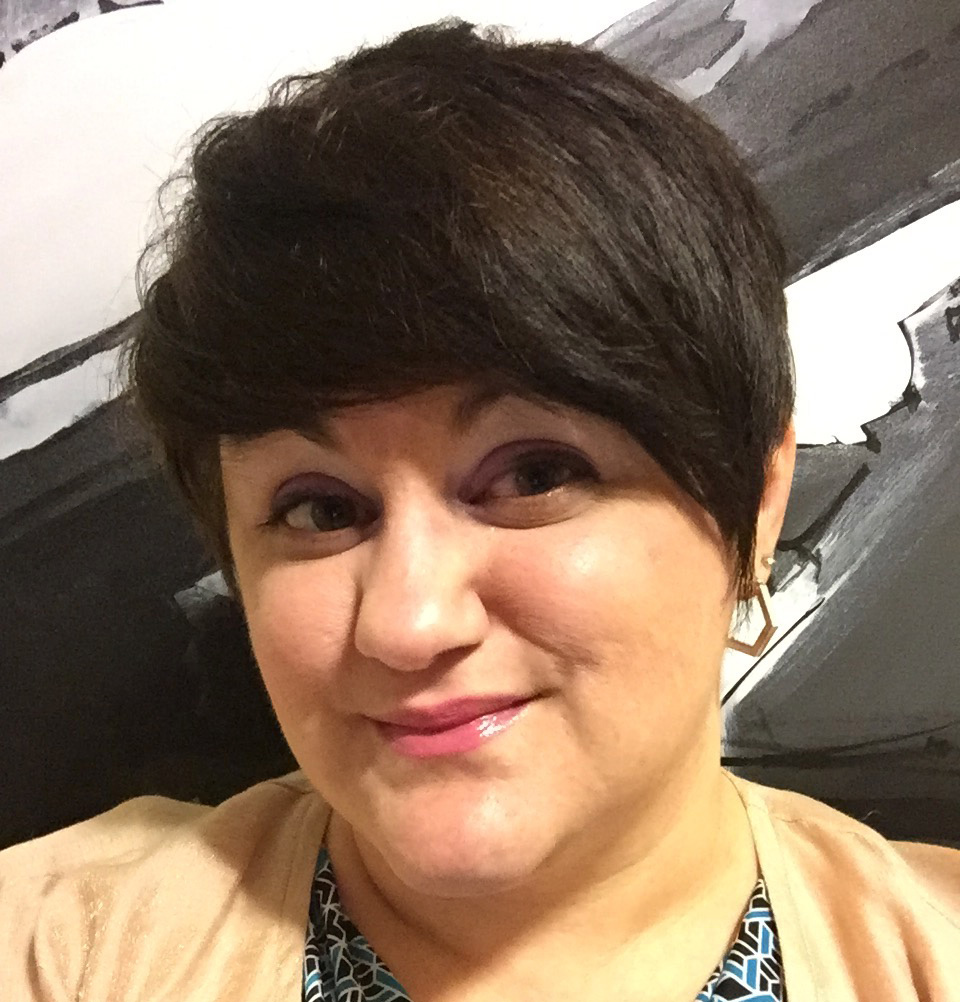There was a time when a physician’s advice would go unchallenged by their patient. Before the internet, and the wealth of helpful – and sometimes harmful – health information that can be found there, patients had few resources outside the doctor’s office to help them fully understand their conditions.
Now, patients are more informed than ever before. A relatively new term – the ePatient – has been coined to describe the individuals that participate fully in his or her medical care. While the “e” in ePatient originally referred to their use of electronic resources to gather information pertaining to their medical condition, it has since taken on a more powerful meaning.
ePatients are empowered to make decisions about their own care. They are equipped with the knowledge and skills needed to make them near-experts regarding their diagnosis, treatment options, and potential outcomes. Possessing this information can also help to improve an ePatient’s ability to cope with chronic disease, and give them a sense of autonomy even if they require some level of assistance from a caregiver.
While patient involvement certainly has a positive effect on the ePatient themselves, it can complicate the doctor-patient relationship. Physicians are not necessarily trained to work with ePatients, and some may even be resistant to the idea of a patient wanting to have an equal voice in the healthcare decisions that affect them.
In an effort to better understand the ePatient perspective, I spoke with Sarah E. Kucharski, consultant, public speaker and advocate for the patient voice in medicine. Kucharski is the former* Coordinator of ePatient Programs for the Medicine X conference at Stanford University and CEO/Chairman and Founder of FMD Chat, a nonprofit organization helping patients with the rare disease, fibromuscular dysplasia (FMD). As a rare disease ePatient herself, Kucharski shares her experiences on her blog, the afternoon nap society.
“When the term [ePatient] was first developed it wasn’t like WebMD and that kind of stuff was really around,” said Kucharski, who is now strategic communications lead for Biotech Partners, a staffing and recruiting firm serving the life sciences community. “So I guess it was a little bit more unusual for people to be doing online research and trying to really learn about their care using web resources.”
Dr. Tom Ferguson, a multiple myeloma patient himself, is thought to have coined the term “ePatient” in 1975, years before the invention of the internet. It wasn’t until 1996 that online health information provider WebMD was launched, allowing patients to explore all the possible causes of their stomach ache, from gas pains to appendicitis.
In 2013, the Pew Research Center reported that one in three American adults said that they had gone online to try to diagnose themselves, or someone else. What’s more, 17 percent of Americans use mobile health applications, while 12 percent use wearable devices to track fitness and other health-related factors, according to a 2015 study by Rock Health.
“They call it ‘Dr. Google’ for a reason,” said Kucharski. “But the word ePatient has also come to mean an advocate: someone who is advocating not just for their own personal health but also for the health, education and general welfare of others.”
Buzzwords like ‘patient-centricity’ and ‘personalized medicine’ have been thrown around a lot in the past few years, but these words have little meaning to patients if they’re not being applied in practice. In 2015, 46 percent of adults in the US rated the quality of the healthcare they receive as “good,” according to a national poll conducted by National Public Radio and others.
Just 33 percent of respondents rated their healthcare as “excellent.” Clearly, this number could be improved and Kucharski believes that reworking the patient-doctor relationship would be a good place to start.
Mutually Agreed-Upon Outcomes
Doctors routinely give patients homework: lose weight; lower your cholesterol; get your blood sugar under control. By and large, these outcomes are self-explanatory for physicians but they might not always be motivating enough for the patients themselves.
Kucharski uses the example of a doctor telling a patient that they need to lower their blood pressure. “That’s not really an outcome that any patient necessarily cares about,” she said, “because blood pressure, in and of itself, is pretty asymptomatic. They call it the silent killer.”
In her opinion, doctors who work with their patients to come up with mutually-agreed upon outcomes are giving their patients a better shot at improving their heath while working towards a goal that matters to them.
“It’s figuring out what matters to the patent to put it in some sort of context,” she said. “Having lower numbers isn’t necessarily a personal goal.”
She gives examples of these goals, conceiving that a patient might say to their doctor, “I want to be healthy enough to see my kid graduate,” or “to go on XYZ trip.”
“Figuring out those sorts of things really results in a higher success rate.”
Kucharski shared her own story of how mutually agreed-upon outcomes helped her get through rounds of physical therapy. She explained that while she understood why standing on a balance ball would stabilize her over time, it was not her goal. The breakthrough, for her, came when her physical therapist asked her what she wanted to be able to do after she recovered.
“Well I want to be able to carry the groceries,” she told him. “I want to be able to go to the grocery store, get home and carry my groceries from the car, up the stairs, into the kitchen. So that’s what we practiced.
Literally we got plastic bags and filled them full of weights and I practiced going up and down stairs. And you know, we were still working on the same skills of balance, and movements and all these things, but we were doing it to accomplish a realistic task. And that was so huge for me.”
Patients are More Than Just Patients
Physicians are taught to deal with their patients, and their symptoms, in an objective manner. This can be helpful, as it ensures that everyone who visits the clinic is dealt with in a fair and unbiased manner.
Unfortunately, this does nothing to support communication between a doctor and patient. A patient looking for a little empathy from their primary care provider may not be receiving the kind of emotional care they need, and often doctors have little insight into how they come across to patients.
When they leave their doctor’s office, local hospital or physiotherapist’s office, patients truly are more than just patients. They are parents, friends and contributing members of their communities.
As patients become more informed and empowered to be an active player in healthcare decisions that affect them, some are looking for ways to teach physicians better ways of communicating with their patients. But as one study found, giving doctors new tools to help them build relationships with their patients isn’t always easy.
Nearly 500 healthcare trainees – including internal medicine and nurse practitioners – were randomly assigned to either attend a communications course, or receive no training in dealing with patients. At the end of the eight-session course, the doctors and nurses were evaluated by patients with terminal illnesses, based on their bedside manner.
So, did the communications course improve their ability to talk to their patients and discuss end-of-life care? In short: no. Physicians and nurse practitioners that participated in the training did not receive statistically significantly higher communication scores from patients.
This idea of seeing patients as people transcends the doctor-patient relationship. Kucharski put forth the idea that perhaps researchers would be more driven to develop new therapies if they knew the face behind the disease, though this is a controversial notion.
“There have been a lot of conversations about how much researchers should be involved with patients, and to what extent that might skew their objectivity,” said Kucharski. “When you are not just trying to cure patient X but you are trying to cure Tom, someone that you know that has a name and story, does that affect the research?
“Might researchers look for results that aren’t there? You know, I see the worry. But, it’s also part of just putting the humanity back into medicine, because we are people, with lives and stories. And I know, that for me, I don’t have an expectation of research providing a cure in my lifetime. But, I am supportive of the fact that it will help those that come after me.”
Patients are Healthcare Consumers (Whether they Like it or Not)
Many patient advocates shy away from the label of “consumer.” And in fact, healthcare is unlike any other product or service which people consume. As Dr. Adrienne Boissy, Staff Neurologist at the Cleveland Clinic, said in a panel on patient engagement, unlike other consumer goods, her patients are never happy to see her and nobody wants her service.
But Kucharski points out that like any other service, people have choices when it comes to choosing their doctor. And, like it or not, this makes patients healthcare consumers.
“Do you go to a mechanic that you don’t trust?” she asks. “Do you go to a grocery store that doesn’t offer you a convenient and affordable shopping experience? We are healthcare consumers, whether we like it or not.”
Not everyone has the same amount of choice when it comes to choosing care providers. Those living outside large urban areas may be forced to go to one of only a few local physicians. In the case of specialist appointments, patients could face significant travel time which impacts other areas of their lives, including work.
And while patients may be healthcare consumers, it’s clear that they’re looking for something more substantial than the type of relationship that comes with a simple exchange of service.
“In a long term care kind of arrangement where this is going to be your doctor for an extended period of time, then the relationship is just so vastly important,” said Kucharski. “I may have the same diagnosis as Bob, Sue and Timmy, but I am not living their lives. I don’t have the same socioeconomic factors and all these social determinants of health. Finances and family support and access – those things play into care.”
Providing Support to Patients Outside of the Pill Bottle
The National Institutes of Health (NIH) estimates that between 25 and 30 million people in the US are currently living with a rare disease. Despite the best efforts of researchers and pharmaceutical companies, it’s impossible to think that all of these patients will benefit from a cure – or even an effective treatment – in their lifetime.
The American Heart Association raised $455 million in public support in 2016, with 20 percent of their expenditures being put into research. Nearly 37 percent of these funds were invested in public health and education, and the primary patient resources provided by the non-profit are in the form of information on heart conditions for patients and their caregivers.
In comparison, the National Organization for Rare Disorders (NORD) raised $20.6 million in 2015, with 72 percent being put into patient services and just 3 percent invested in research. This included information and resources, however the organization also puts emphasis on patient assistance programs for access to medications.
The overarching goal of any research effort is to find a cure, but of course, that’s no short or easy process. Kucharski argues that more emphasis should be placed on providing support for existing patients for whom the future likely does not include a cure.
“What I really ask for from the industry is to pay more attention to the patients who exist now, for whom there aren’t FDA approved treatments, who will not be part of their traditional market share. The industry forgets that there are so many more impacts to illness than just the medication.”
When asked what industry could do to improve patients’ quality of life, Kucharski gives examples of small everyday tasks that become difficult to accomplish once you’re dealing with doctor’s visits, specialist appoints and trying to manage your condition. Things like help with home maintenance and meals are at the top of that list.
She also says that many patients want “someone to just help make it easier, and to recognize that being a patient is hard. It doesn’t stop. It doesn’t go away. You just get tired.”
Flipping the Conference Model
Conferences – both in-person and virtual webinars – remain integral to idea-sharing within the life sciences. Issues that directly relate to patient care are routinely discussed at these events, however the patients themselves aren’t always included in the conversation.
“The conference model is that industry and associations throw the conferences and the patients are lucky if they get to come,” explained Kucharski. “What if we flipped that? What if the patients were the ones having the conference and teaching, and industries, association, doctors, nurses and all the care providers are the ones learning?
“The only reason why this is not happening is because we don’t have the funds. It’s not that we aren’t willing. But what would be bold for the industry is to collaborate and put their money toward a patient organized conference with workshops to learn how patients want them to be patient-centered.”
Conferences like Stanford Medicine X and Janssen’s HealtheVoices are challenging the status quo by not only inviting patients and patient advocates to these events, but giving them the opportunity to be equal players in the healthcare debate. In particular, Stanford Medicine X has implemented an ‘everyone included’ framework – co-developed by Kucharski during her tenure as executive board member of the conference – in their events, in an effort to be inclusive.
Eli Lilly and Patient Engagement
Liaisons between pharmaceutical representatives and members of the patient advocate community are not simple. These companies are often bound by complex legal policies which prevent them from truly engaging with patients, particularly on social media platforms.
But according to Kucharski, the late Jerry Matczak, lead consultant in clinical innovation at Eli Lilly & Co., was a shining example of what the pharma/patient interaction should look like. Matczak was best known for his willingness to listen to patients both on social media and at in-person events like Medicine X.
“He was one of the good guys,” said Kucharski. He was one of the ones who gave us hope that there was this humanity, that there were people in pharma: real-life human beings with feelings who wanted to make a difference.”
Kucharski shared that she met Matczak at a conference in Kansas during a time when Eli Lilly was beginning to focus more on being patient-centered. In addition to being a point of contact for patients himself, Matczak also introduced Kucharski to others working in the industry.
“There is really great conversation that I got to have with a woman who worked in oncology and clinical trials recruitment,” said Kucharski. “The first thing she and I talked about was this notion of market share and in bringing these drugs to market.”
She says the two of them talked about the idea of a drug which works for 75 percent of the patient population with a certain disease. Kucharski was surprised to find that the clinical trials professional was not just concerned about ROI, but actually about finding a working treatment for the remaining 25 percent of patients.
Kucharski explains that they were “thinking about it not as, ‘how do we capture that 25 percent market share?’ but, ‘how do we help the 25 percent of people who otherwise don’t have a treatment?’ I honestly had never thought of pharma that benevolently.”
There’s still a long way to go when it comes to helping pharmaceutical companies and the healthcare system as a whole achieve full patient-centricity. But as evidenced by Sarah Kucharski – now a WEGO Health Advisory Board member – and the innumerable other patient advocates, patients are people with valuable stories to tell. Their expertise not only empowers them to become a stakeholder in their own healthcare decisions, but also gives them the opportunity to improve the healthcare system as a whole.
What’s your view of patient-centricy and how do you think it can be better implemented in healthcare? Share your thoughts in the comments section below!
*Editor’s Note: Sentence updated to reflect that Kucharski was the first to fill that role.












Join or login to leave a comment
JOIN LOGIN